If you’re an avid PC gamer or a keyboard enthusiast, you may have heard of a special computer accessory known as a “stream deck”.
Stream decks are a custom controller for your computer, often made up of an assortment of key switches, knobs, LCDs, and other interfaces. These neat gadgets enable you to perform complex digital tasks, like adjusting background music or launching multiple applications simultaneously, with a single physical click.
Most purchasable stream decks, such as the Elgato MK2, are catered toward video game streamers who employ audio control shortcuts and communication macros, such as the Discord mute button. However, with the right configuration and enough effort, you can program your stream deck to perform practically any digital task for you, from sending an email to your boss to controlling IoT-enabled lights.
Unfortunately, stream decks can get quite expensive, with most popular options costing well over $100. But if you’re up for the challenge, you can build your own stream deck for well under $50 and customize it to your needs.
In this article, we’ll check out some of the best DIY stream deck projects, including many 3D printable options. We’ll cover the basics of each project, including the main features, the project’s popularity, and where you can learn more to build your own!
Stream Cheap

A miniature stream deck option is the Stream Cheap, a 4×2 stream deck featuring only key switches. The designer created this project to serve as a (much) cheaper alternative to the Elgato Stream Deck, which retails for ~$150. Users report that the total cost of the project is just around $20.
Unfortunately, the lack of potentiometers means the Stream Cheap doesn’t smoothly handle audio control. However, if audio control is extremely important to you, you can always create key macros for adjusting volume in simple increments.
To build the Stream Cheap, you only need eight Cherry MX key switches, a 5V-Arduino Pro Micro board, bolts, and some wire. The designer also suggests using relegendable keycaps, which allow for custom graphics, as seen in the image above, but you can use any Cherry MX-compatible keycap if you want to keep the cost low. Assembling the Stream Cheap shouldn’t be a problem either, as there are detailed build instructions on the project page and even more information available on the designer’s website.
- Difficulty: Easy
- Designer: DaveM
- Core components: Arduino Pro Micro, 3D printed parts, Cherry MX switches, relegendable keycaps
- Project page: Thingiverse
Phone Alternative
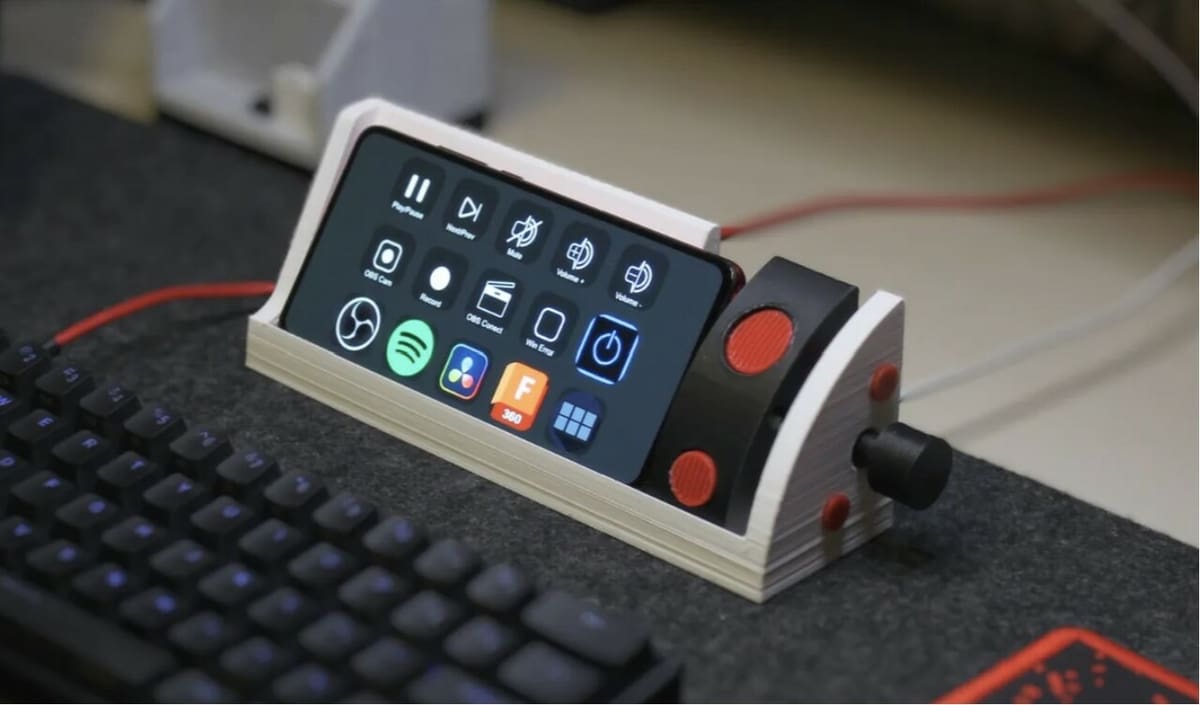
If you want to build an affordable stream deck and have an extra smartphone lying around, then this alternative option is perfect for you. Dubbed the Phone Deck, this project is essentially a specialized universal phone mount. It relies on a smartphone running a macro application to give you many of the same features that a normal stream deck provides.
Besides a smartphone, you’ll only need 10 3D printable parts to build this DIY stream deck. Once complete, the Phone Deck can fit practically any smartphone thanks to the adjustable vice grip on the side of the mount. There are even two speaker vents to ensure you can still hear your phone audio.
The designer didn’t provide any specific printing instructions, but there are a handful of detailed community makes where you can find helpful printing tips, such as scaling the speaker parts to 108%. As for assembly, we suggest watching the designer’s tutorial video, which goes over everything from the phone mount design and assembly to the software instructions for setting up macros.
- Difficulty: Easy
- Designer: Irudimen
- Core components: 3D printed parts, smartphone
- Project page: Printables
MisteRdeck
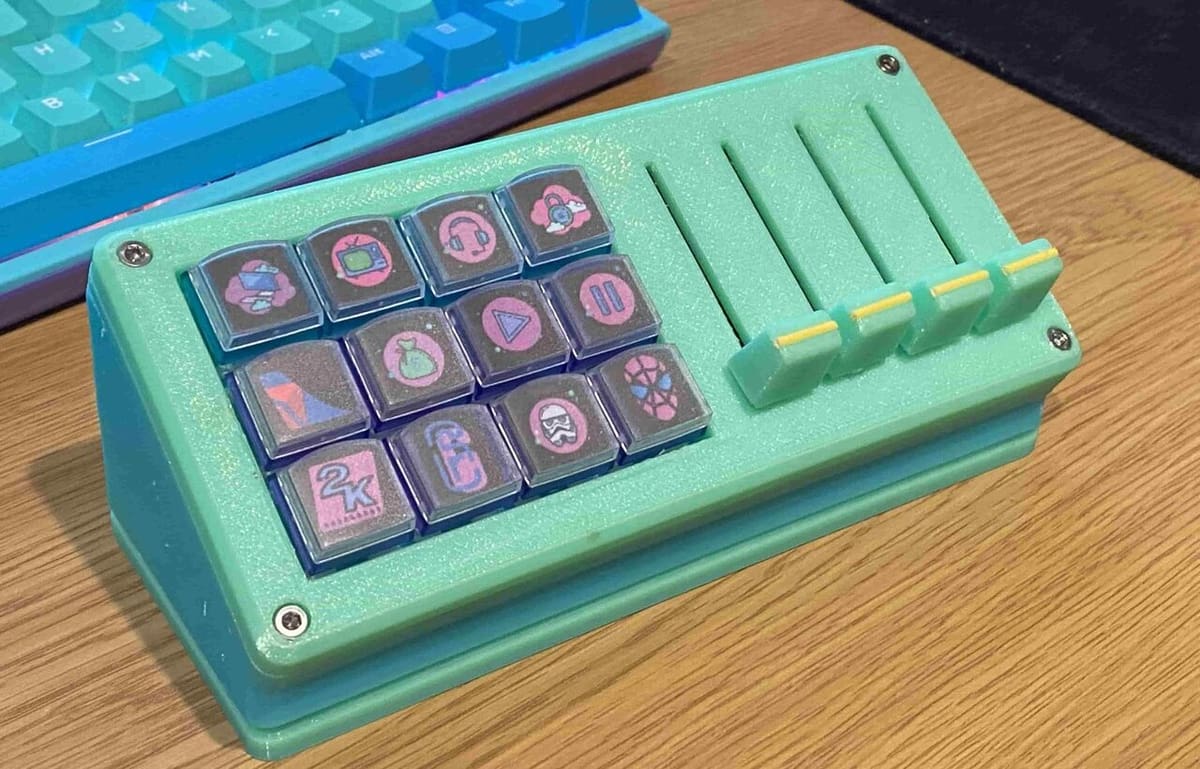
The MisteRdeck is a simple, yet versatile 3D printable stream deck. According to the project page, the designer first built the MisteRdeck after being unsatisfied with the high price points of current options. With 4 sliding potentiometers and 12 programmable keys, the MisteRdeck is more than capable of handling all your gaming, web browsing, and movie watching, simultaneously.
On top of the interface components, you’ll also need an Arduino Pro Micro (or clone) as well as some other small hardware to build this stream deck. All in all, this stream deck project will only set you back around $50-$60. Plus, many of the components are optional or customizable, such as the keycaps, slider knobs, and even the Arduino board.
We took our best shot at making a MisteRdeck and were pleasantly surprised with the results. The designer’s build guide is extremely detailed and helps simplify the assembly process with pictures at each step, wiring diagrams, and instructions for programming macros. We chose to use Midi-Mixer software for digitally configuring the device but you can also use OBS as well as other Midi-compatible software.
While not required, we used relegendable keycaps and inserted custom icons for each of the macro buttons to give the MisteRdeck a more professional look.
- Difficulty: Easy
- Designer: MisteR
- Core components: Arduino Pro Micro, 3D printed parts, Cherry MX switches, linear potentiometers, relegendable keycaps
- Project page: Printables
Mini
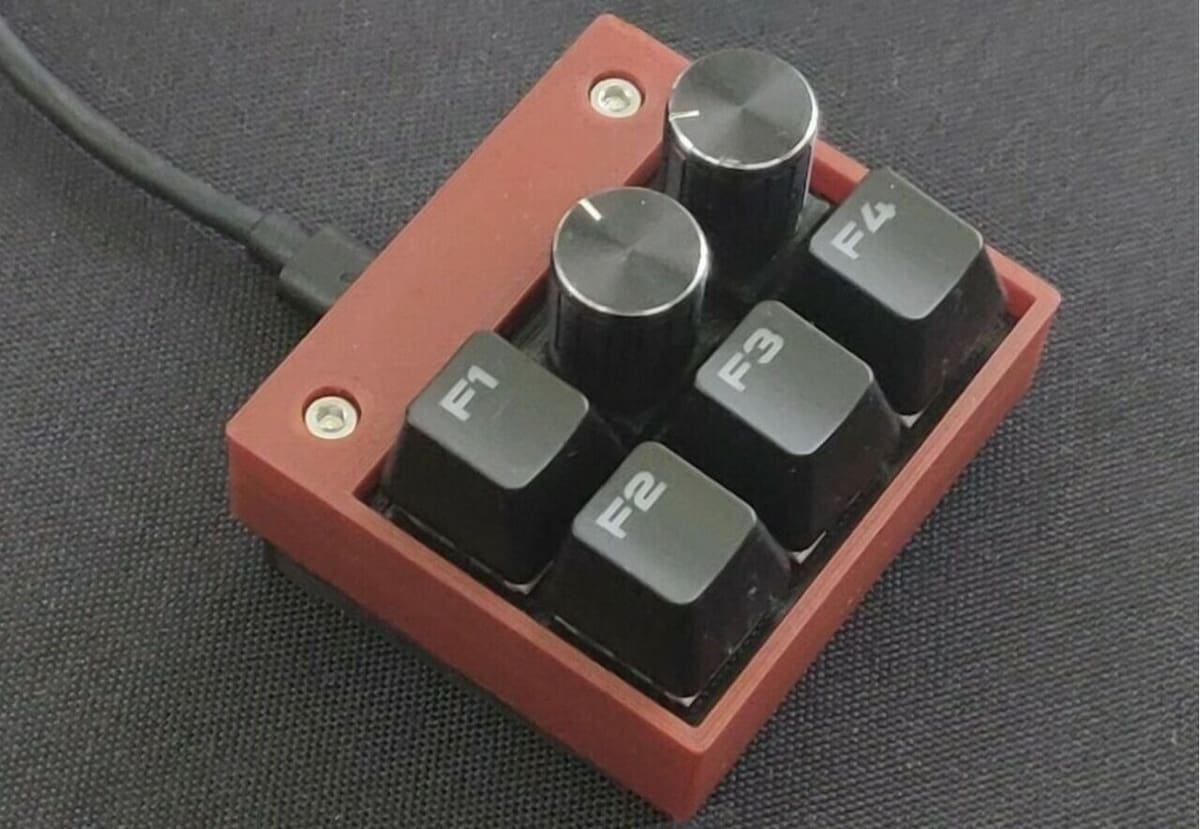
If you’re looking for an extra-compact stream deck that features both potentiometers and key switches, then this next project is for you! This miniature macro keypad follows a 2×3 layout, with two rotary encoders and four Cherry MX switches, all enclosed in a 3D printed case. Despite its small footprint (<60 mm), this mini stream deck can still help out a lot when it comes to managing multiple audio outputs or handling custom macros!
Besides the interface pieces, the only other components you’ll need to build this mini macro pad are a Seeeduino Xiao board, a 3D printed case, plus some nuts and bolts. As for the 3D printed components, the creator of this project listed that they didn’t need any special settings to print the components in PLA filament. Additionally, it’s worth noting that you’ll need to have basic soldering skills to complete this project.
Assembling the custom macro pad should also be a breeze, thanks to the designer’s incredibly helpful build guide for the project. However, it’s worth noting that the designer provided no details about configuring the controls, so we suggest reading up on similar projects to get an idea of what you’ll need to do.
- Difficulty: Intermediate
- Designer: DaKirbyKnight
- Core components: Seeeduino Xiao board, 3D printed parts, Cherry MX switches, potentiometers
- Project page: Thingiverse
Stream Pi

First up, the Stream Pi is a DIY stream deck project that runs on a Raspberry Pi, a touchscreen display, and the modular open-source Stream Pi library to give you an interface to automate and control your computer. Once set up, you can program buttons and other controls into your Stream Pi deck to launch applications, mute your mic, adjust audio, and more!
As Stream Pi is an open-source project, you can integrate the libraries with practically any hardware (an LCD screen with a Raspberry Pi board is just one configuration) to make your own Stream Pi deck. One buildable project that you can follow is Hardware Haven’s Stream Pi deck, which relies on a Raspberry Pi Zero, an Elecrow 10.1-inch touchscreen display, and a buck converter for power.
While there are many ways to set up and configure your Stream Pi deck, you’ll need to start by setting up your Pi board with Raspberry Pi OS and then linking it to your computer’s personal Stream Pi server via SSH. This establishes a connection between your Stream Pi device and your computer, as a direct wired connection isn’t used. Once that’s handled, you can program macros using a combination of OBS Studio and Macro Deck.
- Difficulty: Intermediate
- Designer: Hardware Haven
- Core components: Raspberry Pi Zero, touchscreen display, display stand, buck converter
- Project page: YouTube, GitHub
RGB Lights
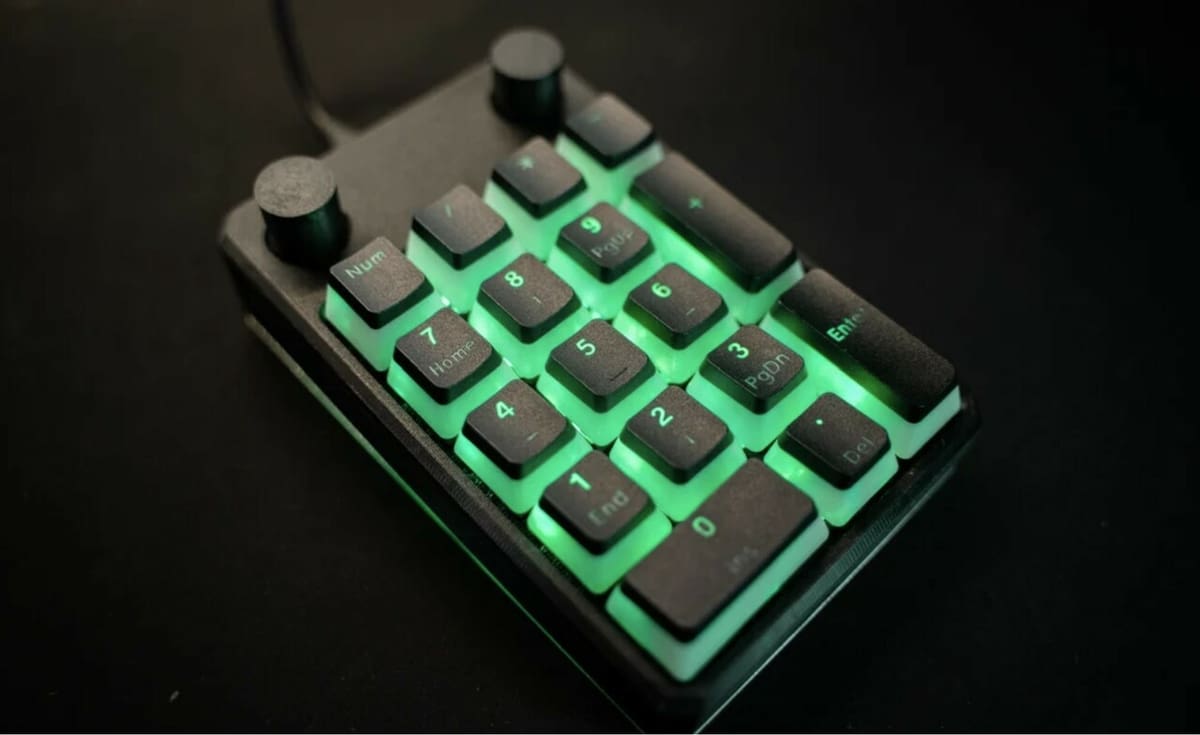
If you’re looking for a stream deck that can provide both audio control and macros while catching the attention of all who see it, then this DIY RGB Numpad is perfect for you! This project is a full-size numpad, with 17 key switches for all numbers (0-9), “Enter” , “+”, and a few other basic symbols. Additionally, the project features two rotary dials on the top corners of the assembly, which you can map to different audio inputs or outputs.
This RGB light-up macro pad, like many options on this list, relies on an Arduino Pro Micro to process all of the inputs. However, the unique aspect of this project is the RGB lighting, which gives the stream deck an off-the-shelf look. This is possible thanks to the use of RGB LED strips inside the case as well as the RGB-compatible Cherry MX switches, described in the parts list.
Aside from the interface and lighting components, the only other hardware you’ll need to make this stream deck is the 3D printable case, keycaps, some wire, and diodes. The full list of parts needed for this project can be found on the Thingiverse page, as well as the instructional build video. It’s also worth pointing out that the designer provided pre-built firmware for the keyboard, which simplifies the digital configuration part of the build process.
- Difficulty: Intermediate
- Designer: ivan_rio
- Core components: Arduino Pro Micro, 3D printed parts, Cherry MX switches, potentiometers, keycaps, RGB lights
- Project page: Thingiverse, GitHub
Modular
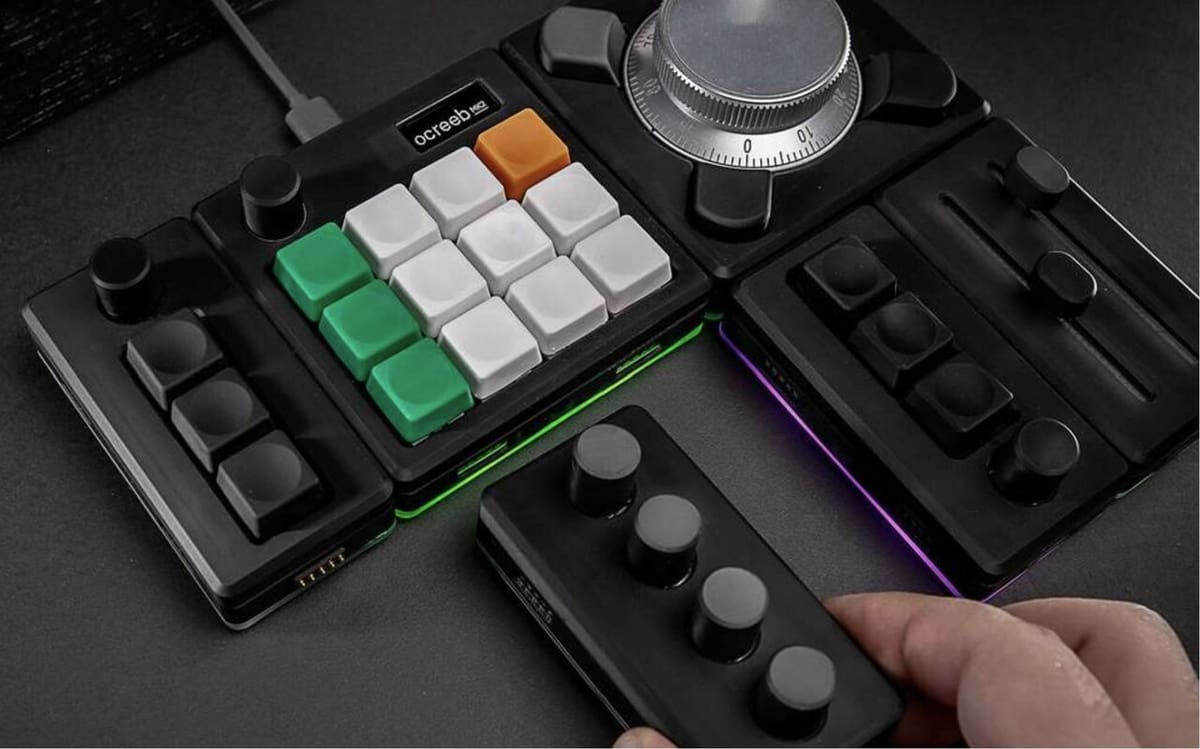
The Modular Macro Keyboard System, or the Ocreeb MK2 for short, is an expandable stream deck with practically unlimited uses. The project is a further development of the designer’s original Ocreeb project, a simple 12-key macro pad with 3D printable components. The main difference is that the MK2 allows for adding hot-swappable modules with different interfaces, such as linear sliders, rotary dials, extra switches, and more.
The original Ocreeb macropad serves as the core of the modular Ocreeb MK2 and additional modules can be connected to the core via 4-pin connectors. And because the Ocreeb MK2 is completely open-source, there’s virtually no limit to what modules you can add, just as long as you can design, program, and build them. With this in mind, we suggest only pursuing this project if you have a good bit of experience with small electronics and prototyping as a lot of technical skills are required to recreate this project.
While the parts list for this project will depend on what modules you want to use, the base components for the Ocreeb MK2 include a Seeeduino Xiao RP2040 board, 3D printed parts, screws, and magnets. The other modules are a bit more difficult to build as some require custom PCBs and additional electronic components.
It’s worth noting that the Ocreeb MK2 still has some known firmware bugs, specifically when using multiple modules, but the designer states that he is currently working to solve them.
- Difficulty: Advanced
- Designer: salimbenbouz
- Core components: Seeeduino Xiao board, 3D printed parts, Cherry MX switches, magnets, various interface components for additional modules
- Project page: Thingiverse, GitHub, Instructables, YouTube
Sparkpad
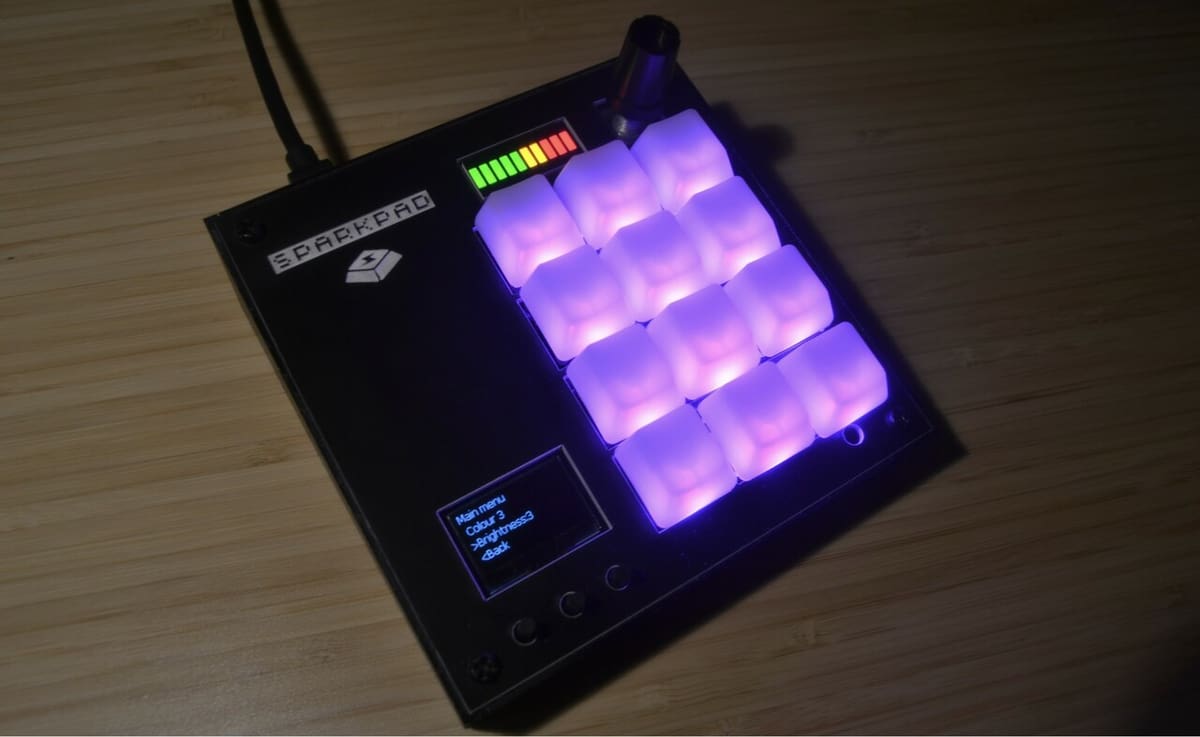
The Sparkpad is a versatile DIY stream deck catered towards streamers looking to achieve a more seamless streaming experience. First developed in 2020, the Sparkpad features 12 key switches, a rotary dial, an OLED display, and an LED bar graph indicator that gives the stream deck a stylish appearance.
The Sparkpad might be a slightly more difficult project as it relies on two custom PCBs to connect all of the input interfaces. However, don’t let this prevent you from building it, as you can easily order the PCBs online in a matter of minutes. The other electronic components used on the Sparkpad aren’t specified but include diodes, an OLED screen, an LED screen, a custom acrylic frame, some wire, and relegendable keycaps.
Similar to most DIY stream decks, you can customize a macro for each switch and an audio output (or input) for the dial, as long as you’re comfortable working with Arduino (or Microsoft VSCode). On a related note, the build and digital configuration processes should be fairly simple thanks to the plethora of open-source documentation across the project’s GitHub and Hackaday pages.
Finally, we should mention that while you can build your own Sparkpad, you can alternatively purchase a pre-made Sparkpad from the maker’s website.
- Difficulty: Advanced
- Designer: Patrick Thomas
- Core components: Arduino Pro Micro, custom PCBs, acrylic frame, Cherry MX switches, potentiometers, LED screen, OLED screen, RGB lights, keycaps
- Project page: Hackaday, Sparkpad, GitHub, YouTube
NucDeck
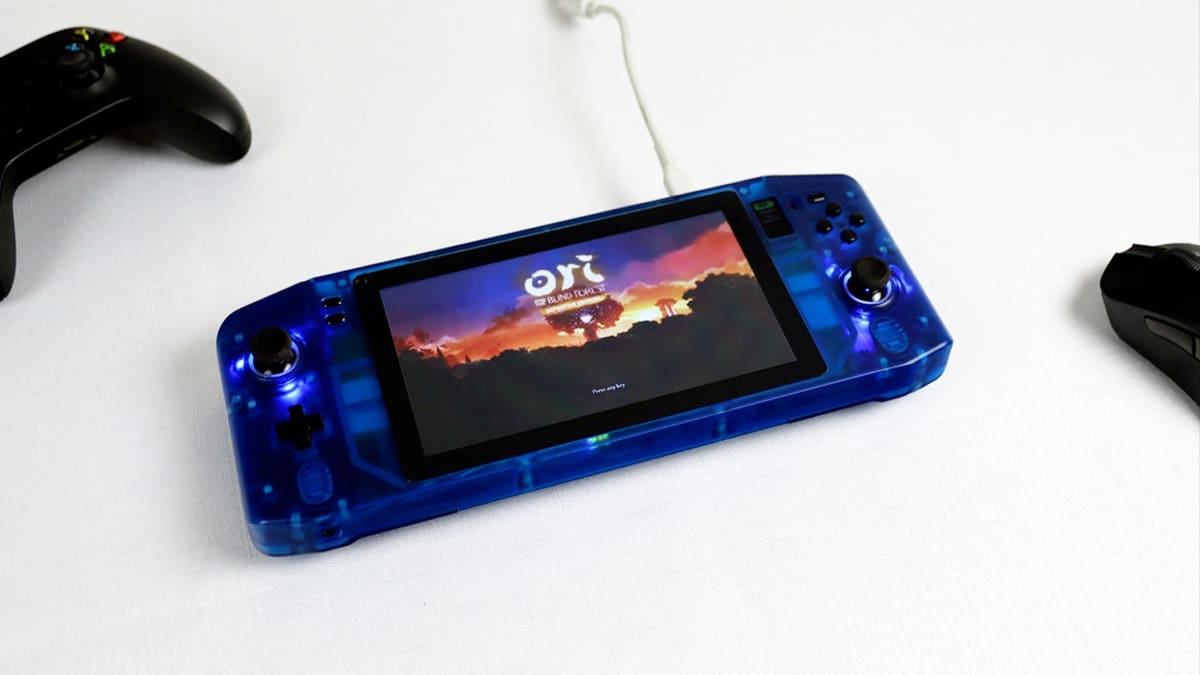
If you’re an avid PC gamer, you’ve probably heard about several recently released handheld gaming devices, such as the Steam Deck, Lenovo Legion Go, or the Logitech G Cloud. While these devices provide an excellent controller-like interface for playing PC games, from Counter-Strike 2 to Cyberpunk, they can cost up to an eye-boggling $800. The NucDeck is an alternative DIY mobile gaming system with a more affordable build cost of around $350.
Developed by YouTuber CNCDan and refined over a 10-video series, the NucDeck relies on an Intel Next Unit of Computing (NUC) Core-i5 CPU and 16 GB of memory to handle all computing functions of the device. These are the two most costly components of the NucDeck, but they enable the device to run PC video games with ease. The other parts of the NucDeck include a 7-inch RGB panel display, a few joysticks, controller buttons, and a CNC-milled acrylic frame (which can also be 3D printed).
All in all, the NucDeck is definitely one of the more difficult projects to build on this list. But, if you’re up for a challenge and have the budget, building the NucDeck levels up your gaming experience and grants you a level of customizability that you can’t achieve with purchasable options.
Custom Deej System
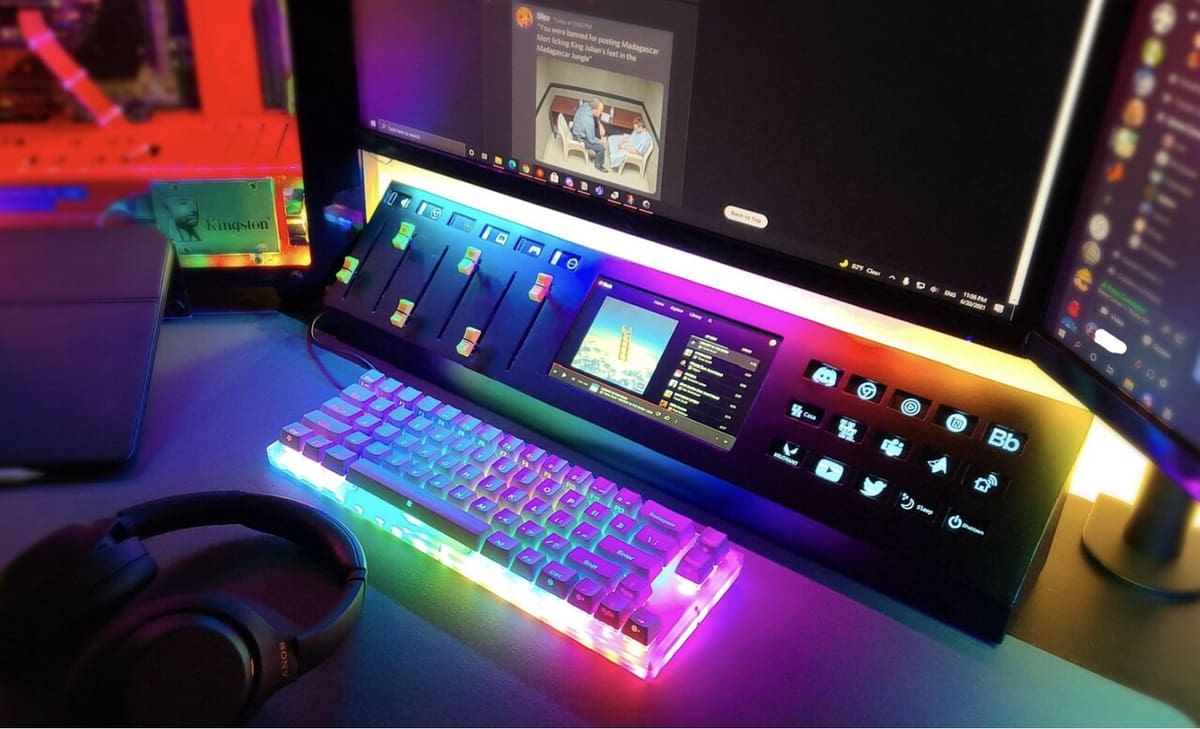
Deej is an open-source volume mixer for Windows and Linux computers that enables you to assign specific audio controls (e.g. Discord mic volume, Chrome volume) to connected hardware such as rotary dials, linear sliders, key switches, and so on. Unlike the other options we discussed, Deej isn’t a buildable project but more of a tool you can use to build a custom stream deck.
As seen in the image above, you can use Deej to make a practically limitless stream deck with LCD screens, linear sliders, and, of course, key switch macros. While this is just one example of the capabilities of Deej, you can find simpler Deej-based stream deck projects online, such as the simple Volume Mixer on Instructables.
FreeDeck is another open-source platform for making custom stream decks, though it’s more catered to using LCD displays as buttons (as seen on the right-hand side of the deck in the image above) rather than sliders and dials. Plus, there are many standardized FreeDeck 3D printable cases available online, such as this basic 3×2 housing.
License: The text of "The Best DIY Stream Deck Projects" by All3DP is licensed under a Creative Commons Attribution 4.0 International License.
